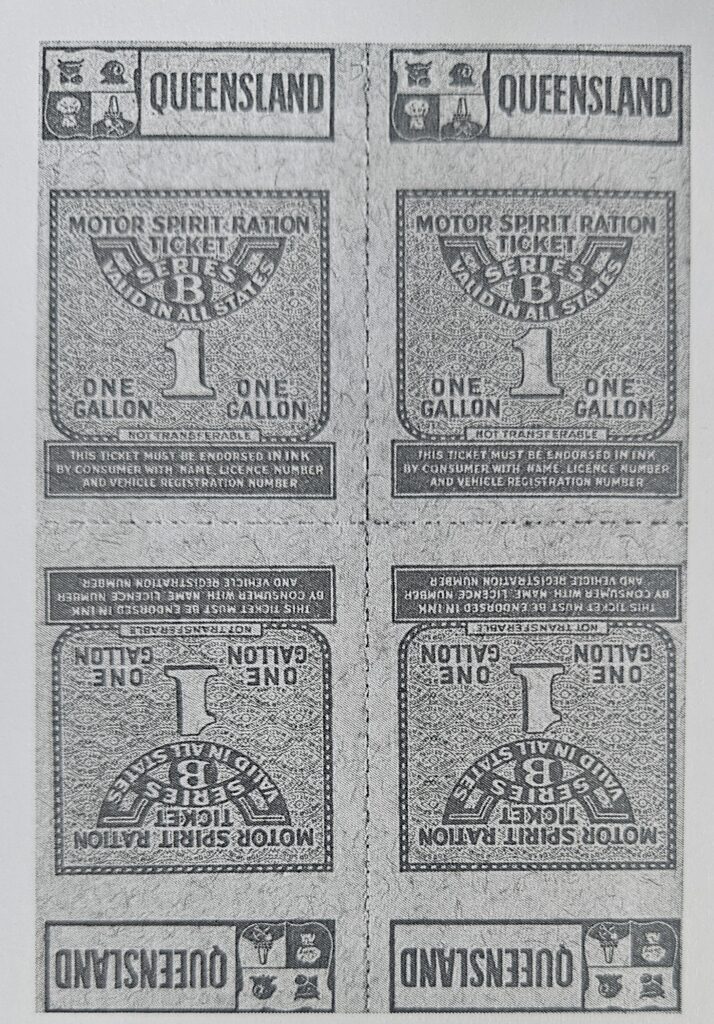
In several of the personal stories on our website we come across issues regarding the rationing of goods. The following information is an abstract from July 2025 bulletin from the Royal Historical Society of Queensland.
During the Second World War (1939 – 1945), Australia, in common with other Allied nations, rationed important commodities, including food, petrol, rubber, and clothing. Australia implemented rationing for a variety of reasons, including reduced imports, a smaller labour force, the urgent need to provision Australian and Allied troops, trade agreements with the Great Britain, and concerns about inflation. Rationing in Australia was never as severe as in Britain, whose supply chains were heavily impacted by the German blockade of the North Atlantic. As Australia was less reliant on imported produce, domestic farming supplied much of its food. Australia began to ration food and clothing in 1942, with each adult citizen receiving a ration book containing an annual supply of coupons. Ration coupons were required for the purchase of clothing, sugar, butter, tea, meat, and, intermittently, for the purchase of milk and eggs. In addition to formal rationing, the Australian population was encouraged to plan meals carefully, reuse clothing, forgo cosmetics, reduce consumption of alcohol and cigarettes, and grow their own fruit and vegetables. (The Queensland experience of food rationing was somewhat eased by its large suburban blocks, which allowed many families to grow their own produce.) While frugality was widely viewed as patriotic, there was also a thriving black market dealing in coupons and rationed goods. In Brisbane, which saw a massive influx of American troops, Australia’s strict licensing laws created the conditions for a thriving black market in liquor. Although rationing continued in Britain until the mid-1950s, Australia abolished the rationing of food and clothing following the 1949 election.
For personal stories click here.
